CCP14
Tutorials and Examples
PowderX Powder Diffraction Analysis Software (beta version) by Cheng Dong
Indexing of Y2O3 in 5 easy steps Using PowderX
The CCP14 Homepage is at http://www.ccp14.ac.uk
- Run PowderX, select File, Import Data and open up
the Y2O3 dataset from the CPD Quant Round Robin. This was
collected on a Philips 1050/1710 powder diffractometer with
diffracted beam Graphite monochromator.
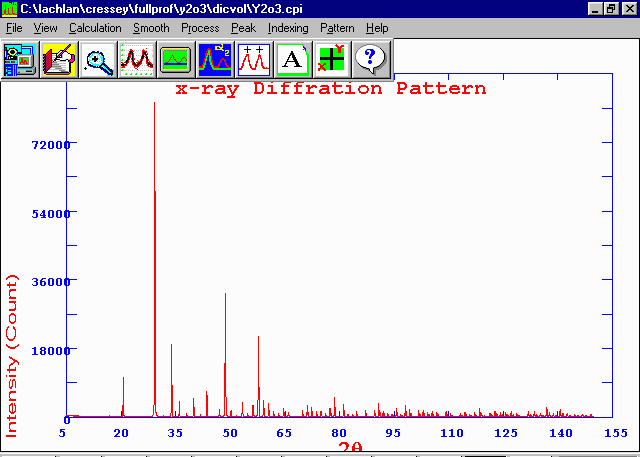
- Perform an Alpha-2 strip by selecting Process, Kalpha2 Strip,
DONG (method). You can test the results, then select "Finish" to
keep this.
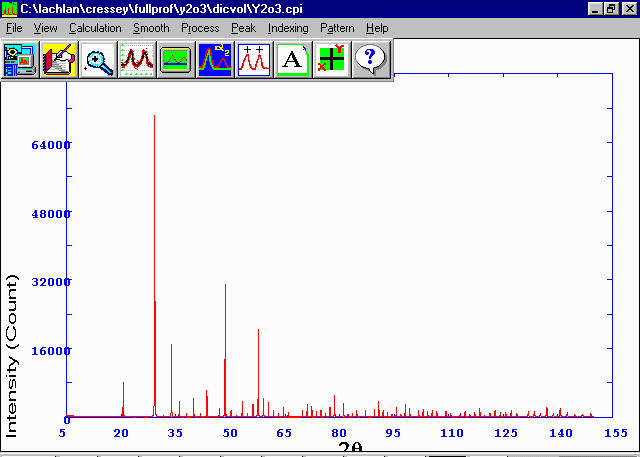
- Perform a background subtraction by selecting Process,
Background, Sonnerveld. You can select Show to show
you the result before selecting.
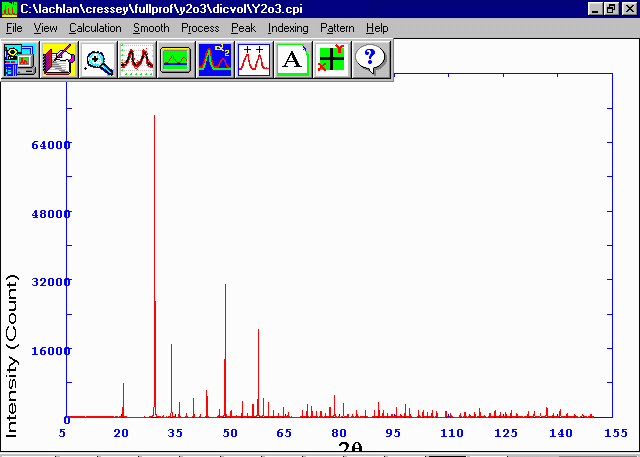
- Perform a peak search by selecting Peak,
Zero Convolution. You can select Show to
experiment with the results before clicking OK.
- PowderX then prompts you to confirm or override the wavelength,
then save the peaks in an appropriate file, and allows you to manually
edit this file.
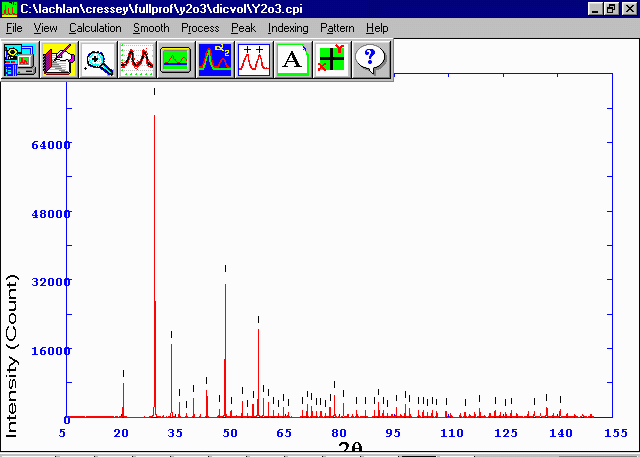
- Assuming that the data is of good quality and not
requiring any peak offset calibration.
To attempt indexing on the resulting peak find file, select
Indexing, Treor. After which select, File, Use Current Peaks
(you have the option of using a save peak file), then
Start, VBTreor90. If a result occurs, it is then up
to the user to correctly interpret.
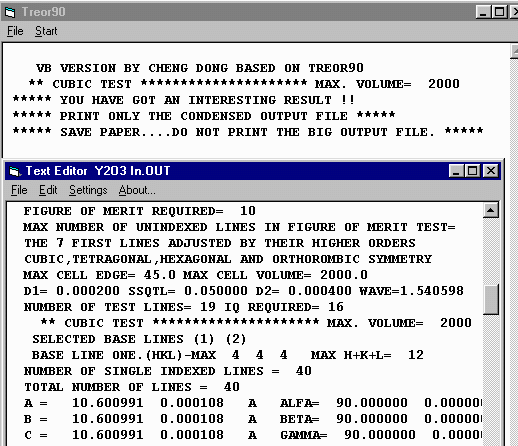
- Done! Of course check the result and make sure it
makes sense. Having the highest quality data possible
does help when performing indexing.





